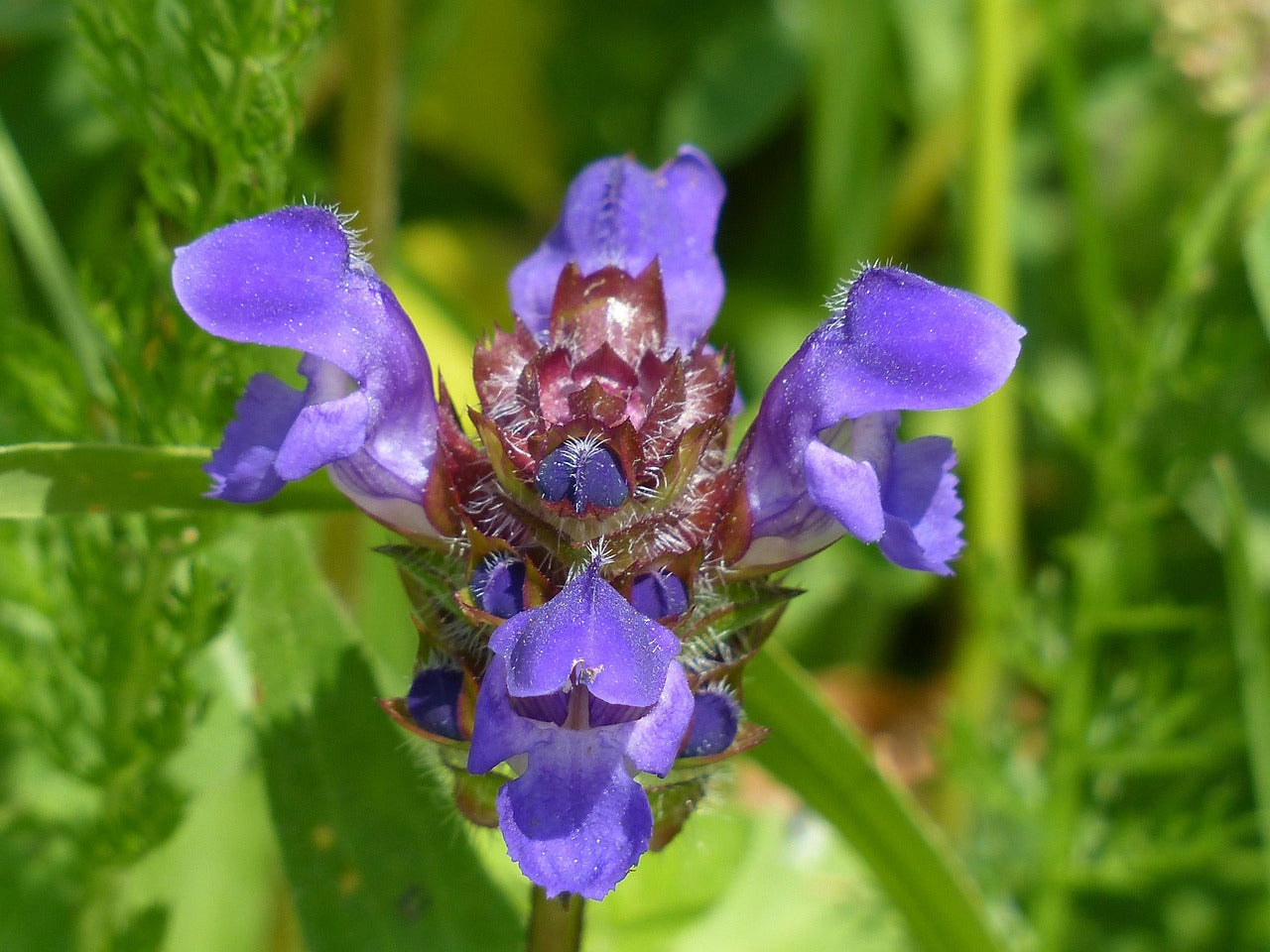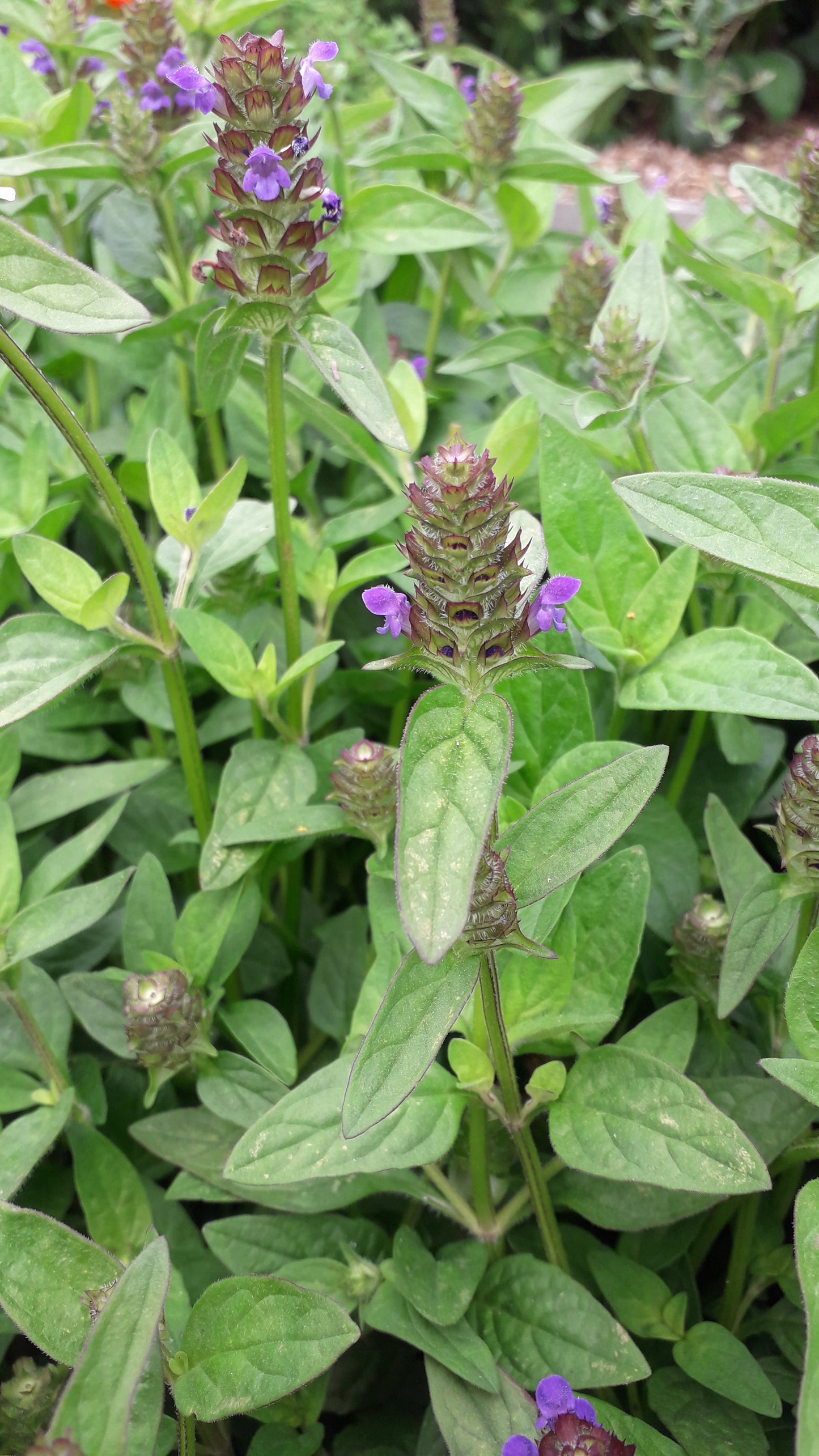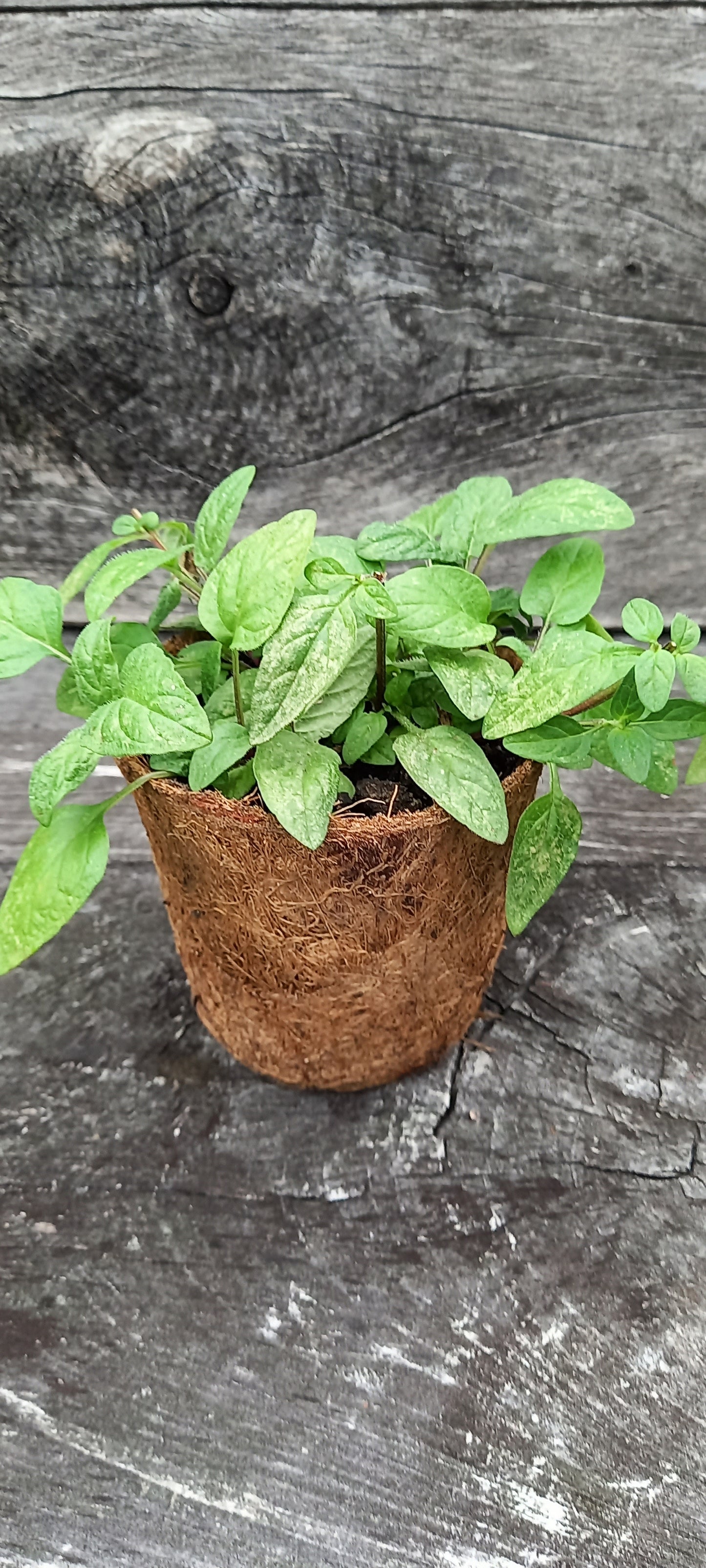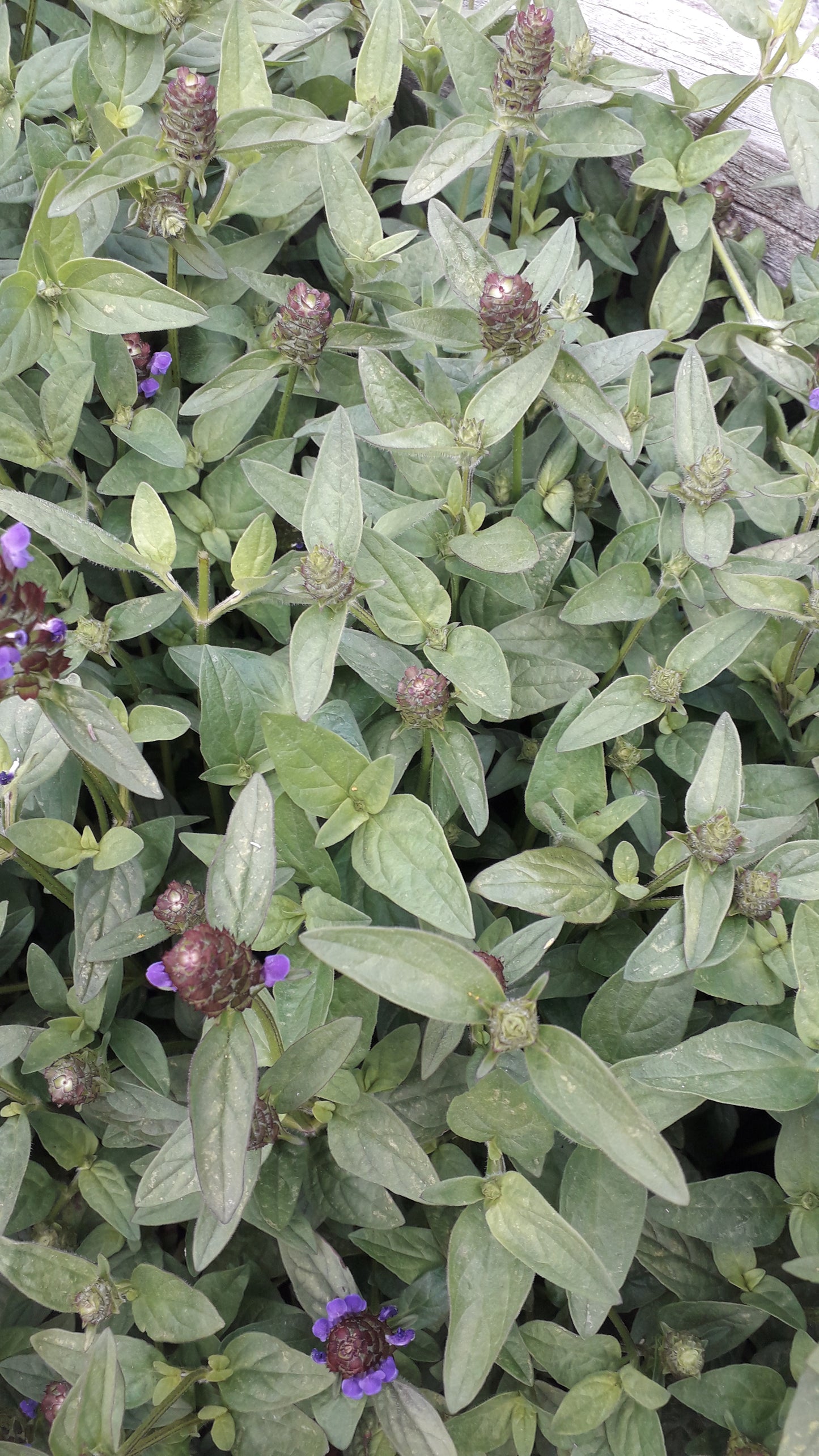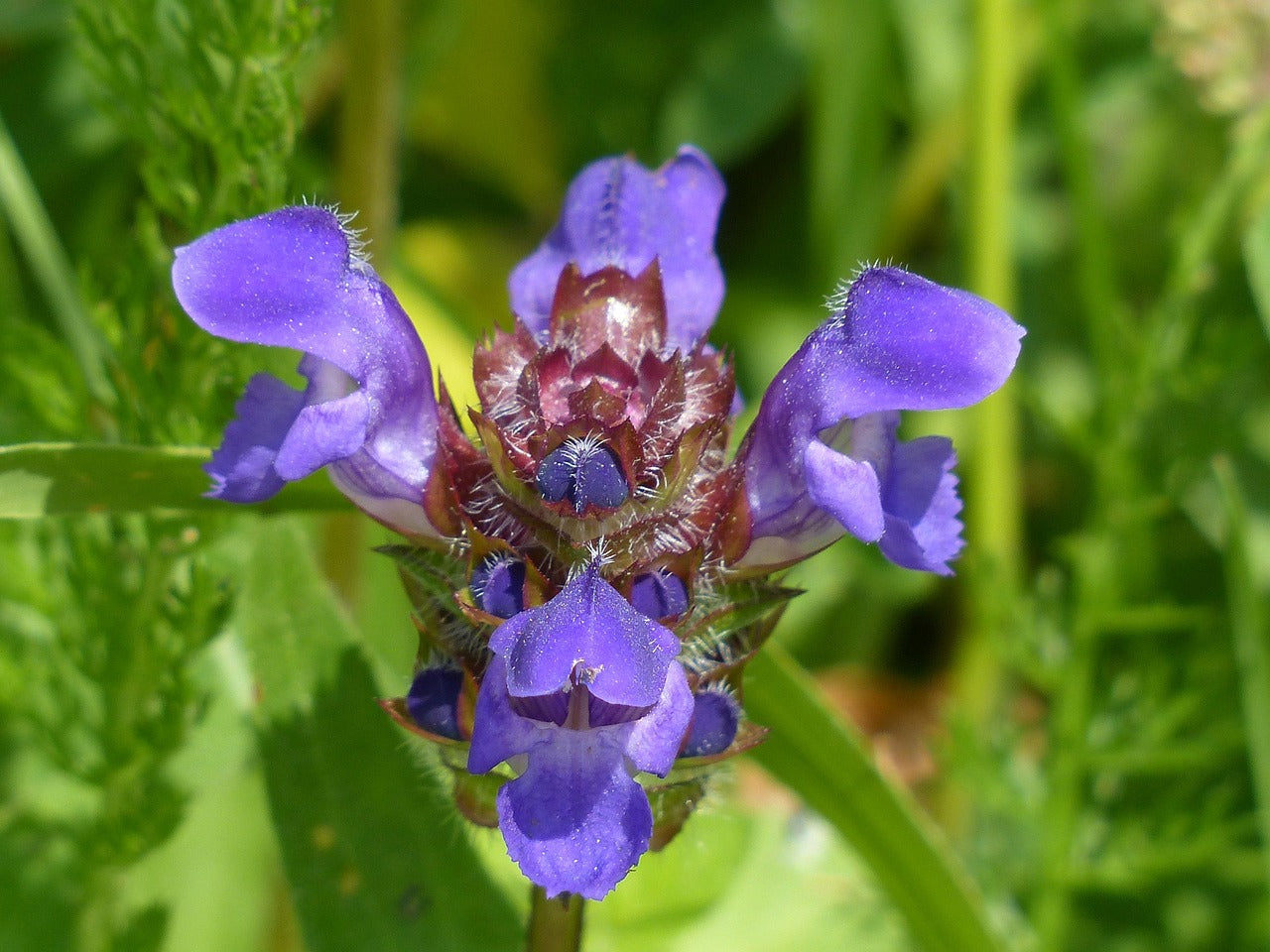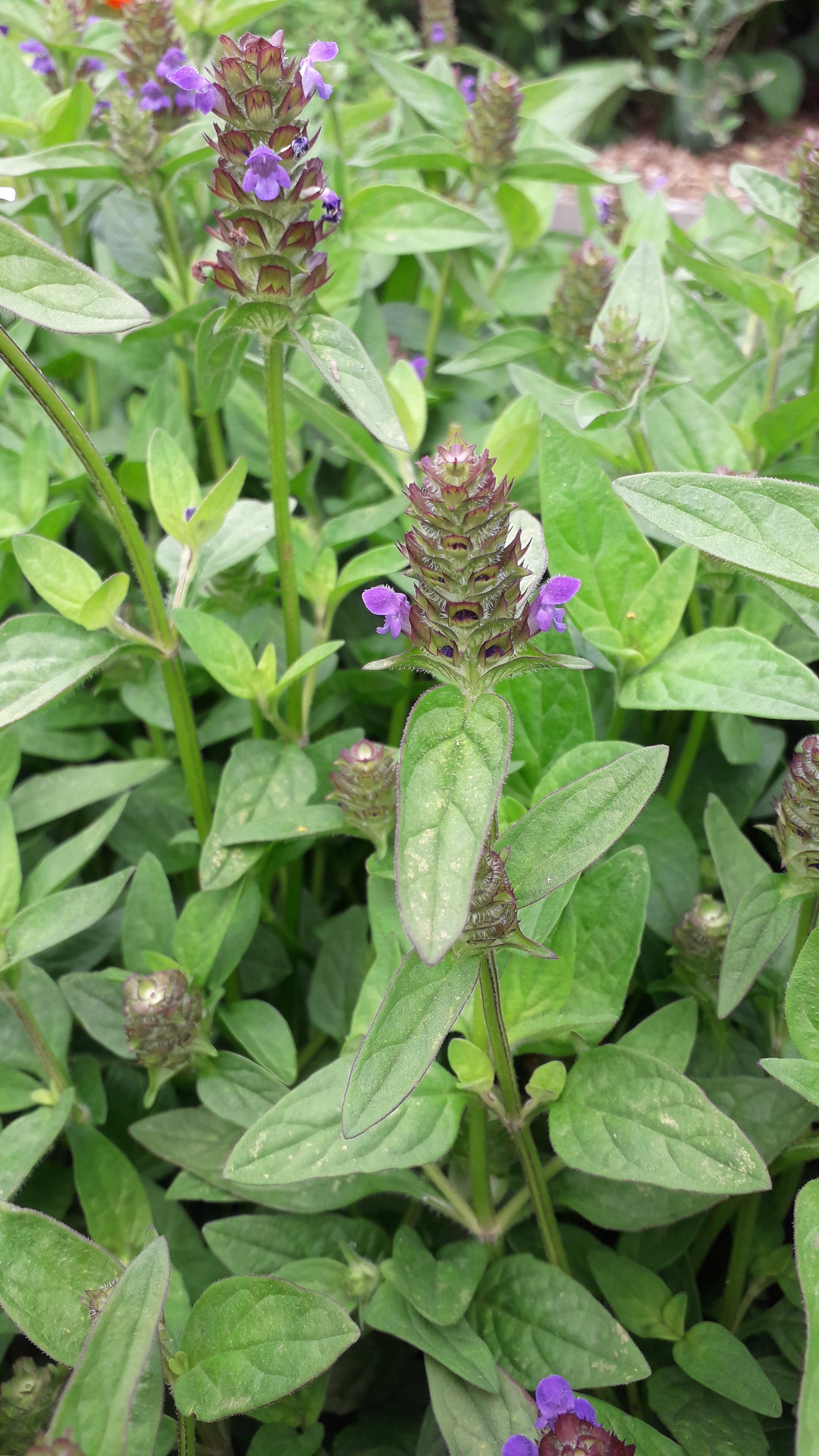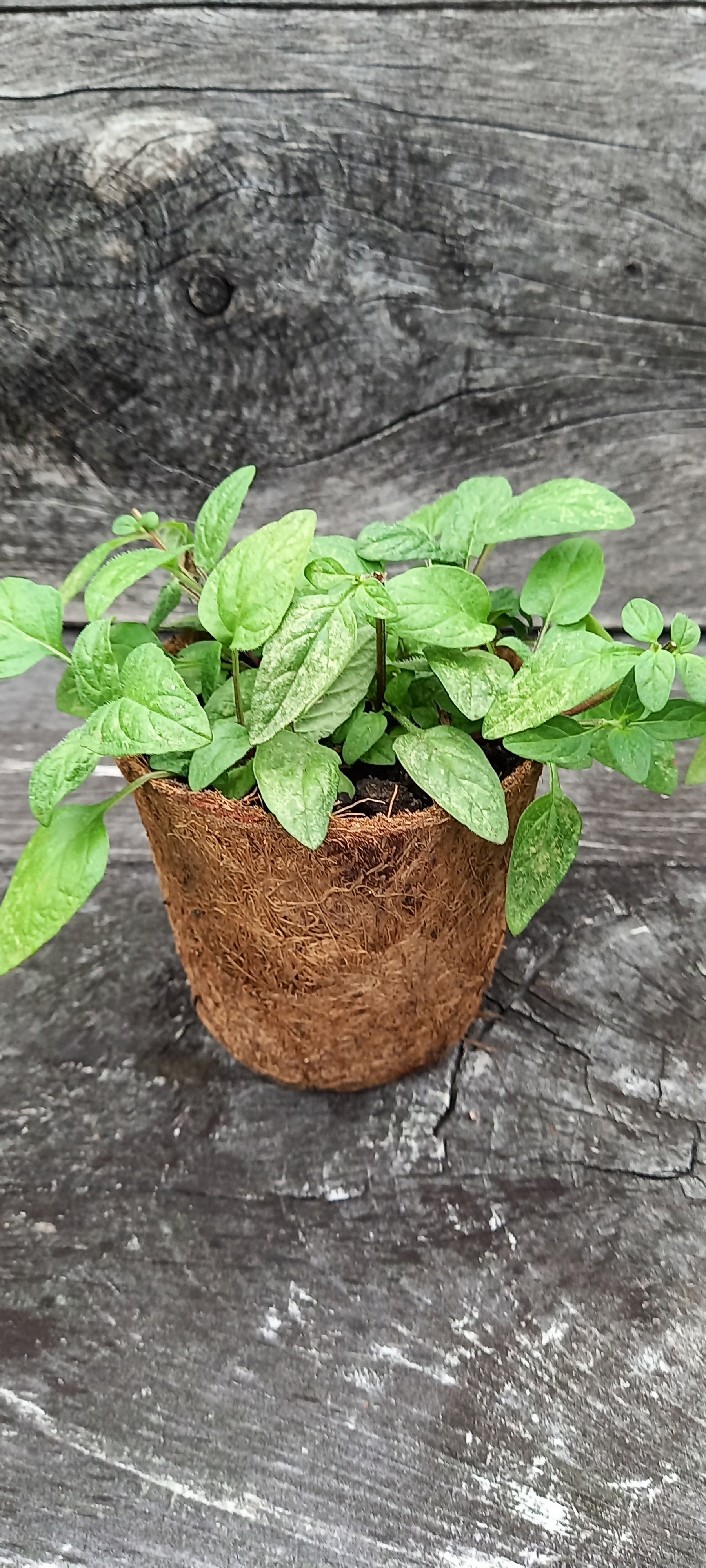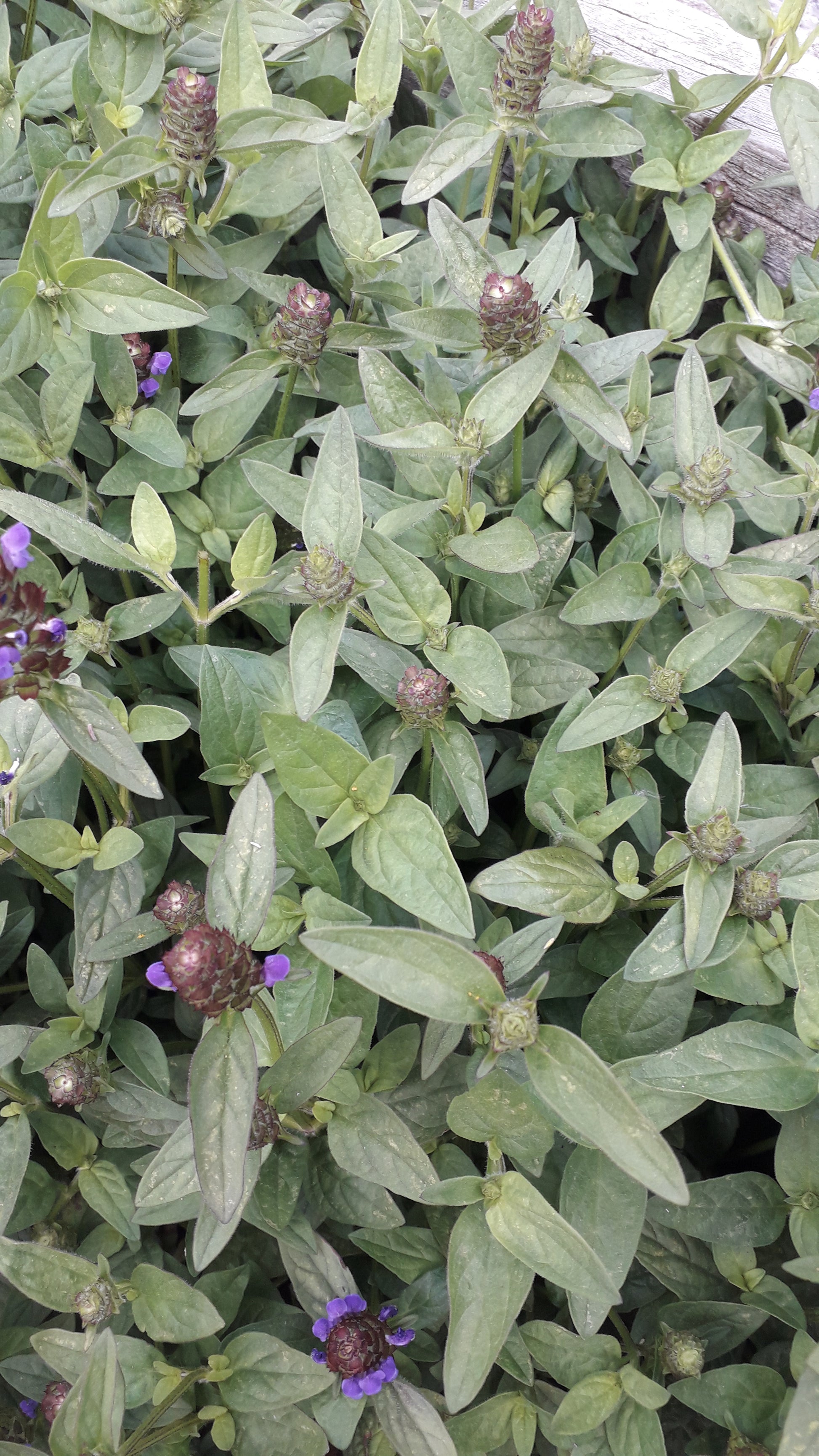The Herb Garden
Self heal
Self heal
Couldn't load pickup availability
Self heal
Botanical name: Prunella vulgaris
Life cycle: Perennial
Height: 10 -30 cm
Position: Sun or part shade
Soil preference: Well drained
Description
Self heal is a low growing herbaceous perennial reaching up to 30 cm high. It creeps along the ground by extending its roots as it grows so it makes a good groundcover. The leaf stalks are approximately 5 cm long with the leaves being positioned in opposite pairs on a square shaped, reddish coloured stem. The 2.5 cm dark green leaves are lance shaped with small hairs on them. The small mauve flowers are borne in whorled clusters, which are surrounded by a pair of stalkless leaves.
Uses
Self heal gained its name for the healing capacity of the plant and was once widely used to treat wounds and heal the skin. Nowadays it is still regarded as useful for ulcers, cuts, burns and bruises. A poultice may be made from the whole plant and placed on wounds to promote self-healing.
The active constituents in self heal include flavonoids, tannins, rosmarinic acid and triterpenes. The plant also contains vitamins A, C and K and thiamine.
It is well known as an anti-inflammatory and antibacterial. It can be made into an infusion and used as a gargle for a sore throat or mouthwash to calm inflammation, assist with tissue healing and ulcers in the mouth and throat, and to promote oral health.
It is also a beneficial herb for the immune system, and for treating fevers, diarrhoea, and inflammatory diseases.
Recent scientific studies have shown Prunella vulgaris is effective in treating herpes, cold sores, and even estrogen type cancers.
The tannins may assist in reduction of skin swelling and inflammation and have an astringent effect on the skin. As such, self heal can be useful as a facewash to treat and tone acne outbreaks and as a general skin toner.
Self heal is a highly nutritious plant with a slightly bitter taste. Add the leaves to a wild green’s salad or blend into a smoothie to access its amazing raw nutritional value. It can also be added to soups and stews as a potherb, or infused in hot or cold water for a refreshing tea.
An olive-green dye can be made from the flowers and stems.
The flowers are very attractive to bees.
Growing conditions
Self heal prefers moist but well-drained soil, in full sun or partial shade. In the shade all parts of the plant will be bigger overall. The flowers bloom at different times depending on climate, but mostly in summer. After pollination the petals drop off and the multiple flower heads look like corn husks. The seeds ripen several months after the summer flowers. Dead head after flowering if you want to stop the plant from spreading - it self seeds readily. The plant is not generally frost tender.
Self heal can be propagated by seeds, dividing clumps in spring and autumn or by vegetative reproduction.
9cm pot.
Share
